Struggling to create content that engages your audience? You’re not alone. Boosting engagement is a major cause of frustration for marketers, but one that can be remedied by embracing a new content format: interactive content.
Interactive content works by getting your audience to do something before revealing information. It works so well because it directly relates to time.
Time is a precious thing. Think about it: the punishment for some of the world’s worst crimes isn’t a monetary fine… It’s a time-fine (often jail time), which goes to show that time is valued more than money.
Interactive content encourages the investment of time, allowing you to reward your audience with hyper-relevant results.
This can lead to a fantastic user experience, social shares, and an abundance of site traffic… If you do it well.
In this article, I’m sharing the benefits of using interactive content in your strategy, along with the five ways you can get started.
Why Should I be Using Interactive Content?
Interactive content has been named as the future of content marketing. But, it’s not just a new phenomenon whose usage will decline rapidly in a matter of months.
46% of content marketers use interactive content, and that number is on the rise. Focusing on interactive content this year could position you a step ahead of the competition.
Here’s why you could hit the jackpot by focusing on it this year:
It’s preferred by consumers
Let’s start with the foundations. Think about the basis of any successful marketing campaign: a thorough understanding of your target audience, and what they’re more receptive to, marketing-wise. (These are the people you’ll be marketing to, after all.)
91% of B2B buyers prefer to consume interactive and visual content. Your ideal audience is already looking for interactive content. Talk about catering to their needs!
Educating potential customers
Another key element of a successful marketing strategy is to educate your audience. If your audience don’t understand what you have to offer, or become confused at some point in their buying process, it could push them away — and into the arms of a competitor.
Almost half of marketers report that interactive content is more effective at educating the buyer, compared to 6% with passive content:
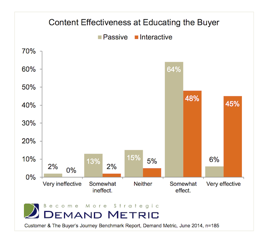
Figure 1: Conversion Study by Demand Metric (source)
…Making it a fantastic way to drive-up the results – including the ROI – of your campaigns.
Higher conversion rates
Businesses are always looking to drive up their conversion rate. Whether you’re looking to generate leads, collect email addresses or close sales, conversions are a key factor in many marketing campaigns.
Interactive content has been proven to convert 2x better than traditional content types.
Not only does this make it a great asset for sales-focused marketing teams, but the risk of using a new content format without solid results is eliminated.
Generates more pageviews
If the primary objective of your marketing campaign isn’t to generate sales, you’re still likely to benefit from this content type.
That’s because interactive content has been found to generate 4-5x more pageviews than static content. This surge in new visitors to your site could become long-term, high-paying customers, if they’re engaged.
How to Use Interactive Content in Your Marketing Campaigns
Now that you understand the benefits of using interactive content, let’s move onto the good stuff: the types of content your business can use to generate strong results, based on your marketing objectives.
1. Quizzes
A quiz is a fun piece content whereby your audience answers select questions in return for a result.
Buzzfeed is often referred to as being the King of Quizzes. It built its media empire using quizzes. But it’s not just big-name brands that can benefit from this type of interactive content.
Kayla Hollatz is a small business owner that offers branding services. In an attempt to use interactive content to generate leads, she created a personality quiz called, “What Is Your Brand Voice Style?”.
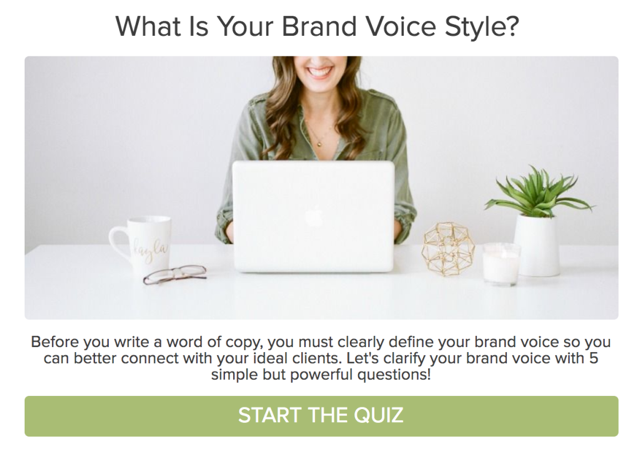
Figure 2: Quiz case study by Kayla Hollatz (source)
After embedding the quiz on her website, Kayla was able to generate 1,480 leads at a 55.8% conversion rate — all from one single piece of interactive content.
You can achieve comparable results for your own business, and it’s likely to be more fun than you think!
There are several quiz formats you can follow:
- Personality tests
- Results-based (i.e. – ‘You scored 9/10!’)
- Multiple choice quizzes
Once your quiz is set up and hosted on your site, optimizing email integrations can help you to collect email addresses. These people are warm leads, with an already-proven interest in your brand. Going forward, you can use email marketing to upsell products and convert leads into paying customers.
2. Calculators
Another popular type of interactive content is calculators. However, unlike the quiz option, this format allows you to dive deeper into your audience’s needs, collecting information to build accurate buyer personas.
That’s because calculators work by asking a user to input data. Based on their data, your piece of interactive content will follow a set formula to generate a result, visible to your user.
You’ve got the opportunity to tailor this advice, depending on the outcome. This results in a better understanding of your customers, and the chance to create highly-specific content that appeals to each customer group.
Here’s a great example of a mortgage calculator created by the NY Times:
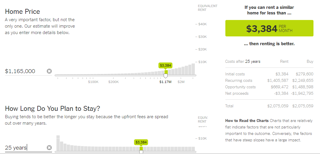
Figure 3: Mortgage calculator by the New York Times (source)
By entering the price of my house, along with the time I plan to stay there, the calculator show me how much I could afford to rent a house for. Rather than spitting out a generic piece of content, this information is personal to me.
Let’s say that you’re a marketing agency who has decided to create a calculator. You ask your audience to input their annual turnover, how many employees are on the books, and their monthly expenses. In return, your calculator will suggest an affordable budget they can assign to marketing activities.
If someone using the calculator found their recommended marketing budget was $10,000 per month, you’re able to tailor the content they’re exposed to. Instead of showing beginner-level content to the companies with a bigger budget, you could refer them to content like “how to find a marketing agency.”
The same can be applied vice versa: if the person using the calculator only has a budget of $100 per month, tailor the content they see on the final screen. Granted, investing in calculators can be a financial and time-related investment, but it caters to the one critical requirement of content marketing: relevancy.
3. Interactive Infographics
When we mention the word ‘infographic’, it’s not uncommon for business owners to shudder in their boots. After all, creating a strong infographic that drives organic results (without paid advertising or manual outreach) can be tough.
That said, infographics are one of the most popular forms of static content; they’re liked and shared 3x more than other any other type of content on social media. If you create an interactive version, you could reach more people — and encourage them to convert when they visit your site.
You can add the interactive element into infographics by creating a visual piece of content that requires your audience to take action. That could be:
- Clicking a button to learn more about a fact
- Sliding a panel to reveal statistics
- Hovering the mouse over an element to show more information
- Here’s a fitting example of how Podio has used an interactive infographic to display the daily routines of creative people:
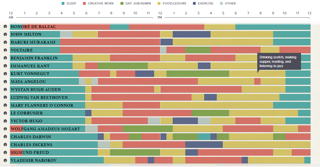
Figure 4: Informative infographic by Podio (source)
By hovering over the coloured sections of their infographic, I’m able to get more information on a specific topic. Not only does this get the user involved (catering to the interactive element), it allows publishers to add more value to their infographics without overwhelming the user with data.
4. Use Carousel Formats
In a blog post for Copyblogger, Scott Brinker from ion Interactive said:
“By its very nature, interactive content engages participants in an activity: answering questions, making choices, exploring scenarios. It’s a great way to capture attention right from the start. Individuals have to think and respond; they can’t just snooze through it.”
A simple (yet effective) way to do get your audience engaged is to use carousel formats on your website.
This tactic has proven particularly popular on Facebook, with carousel advertising formats performing 10x better than regular ads. Why? Because of the interactive element.
By hooking your audience in and persuading them to do something, they become more invested in your content. But, it’s not just paid advertising that could benefit from interactive carousels. Websites can implement this content format on their homepage, encouraging users to click-through for more information. The Tea Round App has an awesome example of this on their homepage:
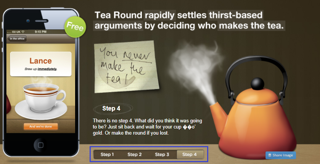
Figure 5: Tea Round App homepage (source)
By splitting their explanation of using the product into four steps, the company has used a carousel format to pique the user’s interest when landing on their homepage. The information isn’t there for them to read instantly. They need to invest time and complete a manual action before learning more, making it a fantastic approach to getting their audience engaged with their content.
5. Interactive Video
The final type of interactive content you could use is a new take on an old classic: video.
Video content has proven to drive excellent results for marketers in various industries. In fact, 51% of marketers report that video has the best ROI of all content types. Your results can be supercharged if your video features an interactive element.
Interactive videos come in many shapes and forms. You could create a video that gets your audience involved by clicking, typing, or performing another action. Because they’ve invested time into your content, it could result in longer average watch times — and positively impact conversion rate.
The Guardian has created something similar on its website, showcasing the ‘Seven Digital Deadly Sins’. The video opens with a 30-second introduction, whereby users can get a rough overview of the content they’re about to consume. They’re then directed to this screen, with a choice to make on which ‘sin’ they learn about first:

Figure 6: Video by the Guardian (source)
This is a fantastic way to get your audience engaged with video. Considering that only 65% of viewers watch more than three-quarters of an entire video, interactivity could be the make-or-break factor behind whether people watch your video in its entirety.
[kc_row use_container=”yes” _id=”58532″][kc_column width=”12/12″ video_mute=”no” _id=”908052″][crum_title title=”Read Also” _id=”511123″ type=”h1″ inline_link=”yes” title_link=”https://digiprad.com/inbound-marketing-blog/|Inbound Marketing Blog|” css_custom=”{`kc-css`:{`any`:{`box-style`:{`text-align|`:`center`}}}}”][kc_row_inner column_align=”middle” video_mute=”no” _id=”654691″][kc_column_inner width=”100%” _id=”652983″][crum_post_slider layout=”portfolio” number_of_items=”3″ dots=”yes” autoscroll=”yes” time=”5″ number_post=”9″ _id=”248615″ dots_position=”top” post_taxonomy=”post:inbound-marketing-blog” order_by=”ID” order_list=”ASC”][/kc_column_inner][/kc_row_inner][/kc_column][/kc_row]
Conclusion
The aim of any piece of content — interactive or otherwise — should be engagement. As it’s a metric proven to relate directly to purchasing decisions, introducing interactive content to your marketing strategy is the best way to really drive results.
[crum_call_to_action layout=”center” title=”Tell Us About Your Project” desc=”Q2hhdCB3aXRoIHVzIG9uIHdoYXRzYXBw” show_link=”yes” btn_size=”large” _id=”953311″ link=”https://api.whatsapp.com/send?phone=2349067688122|We are online|_blank” btn_color=”primary” css_custom=”{`kc-css`:{`any`:{`title`:{`color|.heading-title`:`#ffffff`},`sub-title`:{`color|.heading-text`:`#ffffff`}}}}”]